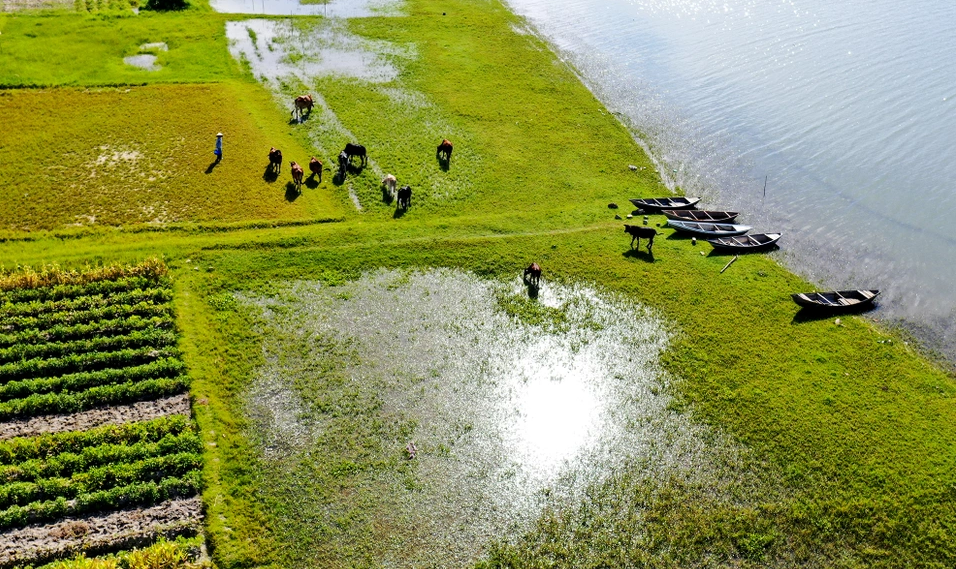
The Splendor of Sa Huynh’s 3,000-year-old Land
According to experts, the Sa Huynh culture has a unique historical value because it was formed and developed right on the central strip of land, which meets the criteria for designation as a special national relic.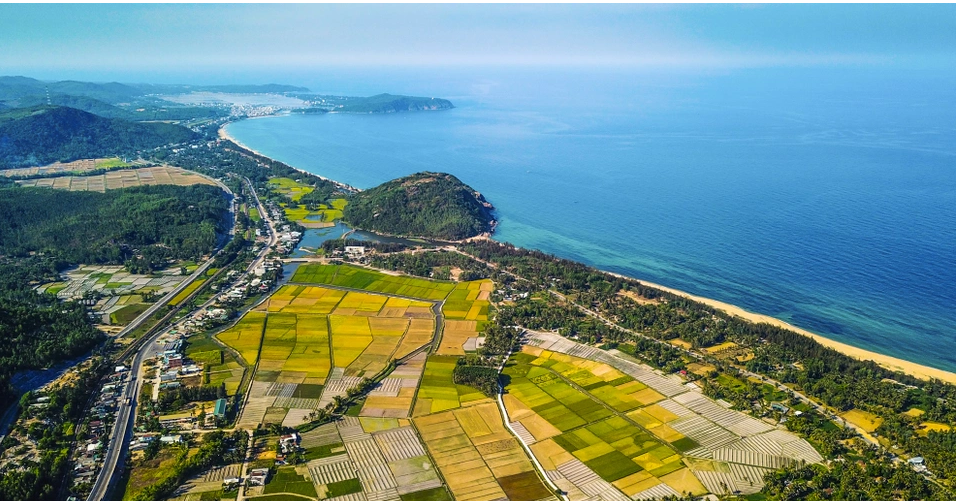 Sa Huynh relic complex (Duc Pho town) is located about 45 kilometers south of Quang Ngai city, near national highway 1 and the north-south railway. The People's Committee of Quang Ngai is preparing a dossier to propose Sa Huynh culture as a special national relic.
Sa Huynh relic complex (Duc Pho town) is located about 45 kilometers south of Quang Ngai city, near national highway 1 and the north-south railway. The People's Committee of Quang Ngai is preparing a dossier to propose Sa Huynh culture as a special national relic. The Sa Huynh cultural relic complex consists of 5 points spread over 480 hectares with many famous landscapes and attractions such as An Khe lagoon, Phu Khuong, Long Thanh, Thanh Duc, Go Co ancient village... continuous distribution in the space of lagoons, seas, Sa Huynh dunes.
The Sa Huynh cultural relic complex consists of 5 points spread over 480 hectares with many famous landscapes and attractions such as An Khe lagoon, Phu Khuong, Long Thanh, Thanh Duc, Go Co ancient village... continuous distribution in the space of lagoons, seas, Sa Huynh dunes.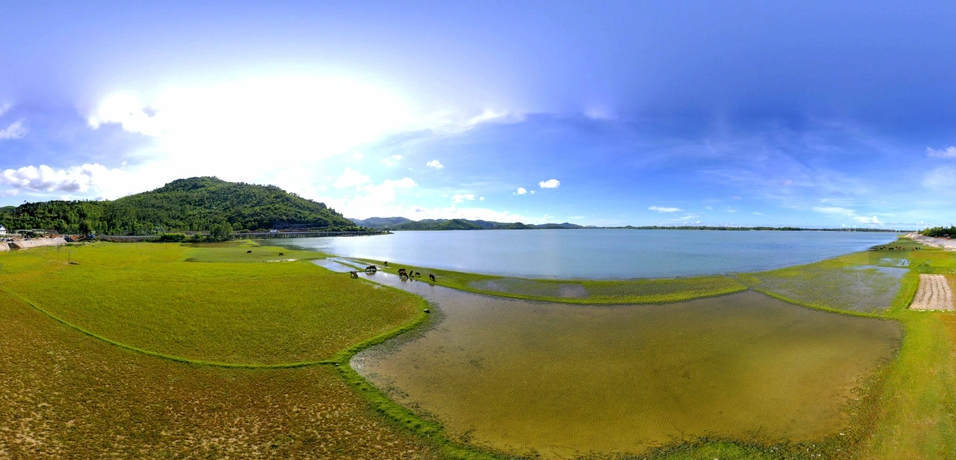 The heart of Sa Huynh cultural relics is the An Khe freshwater lagoon. M.Vinet, a French archaeologist, discovered about 200 jar tombs on the coast of Sa Huynh, near the ancient village of Go Co, in 1909. Dépot à Jarres Sa Huynh is the name of this archaeological site (meaning Chum Sa Huynh warehouse).
The heart of Sa Huynh cultural relics is the An Khe freshwater lagoon. M.Vinet, a French archaeologist, discovered about 200 jar tombs on the coast of Sa Huynh, near the ancient village of Go Co, in 1909. Dépot à Jarres Sa Huynh is the name of this archaeological site (meaning Chum Sa Huynh warehouse). "As I sail to explore An Khe lagoon, I notice how peaceful the natural landscape is, retaining the natural beauty of the central countryside. This vast freshwater lagoon is particularly close to the beach of Go Co ancient village, which is rarely available "Ms. Nguyen Thi Tu Anh (in Ho Chi Minh City) HCM) also contributes.
"As I sail to explore An Khe lagoon, I notice how peaceful the natural landscape is, retaining the natural beauty of the central countryside. This vast freshwater lagoon is particularly close to the beach of Go Co ancient village, which is rarely available "Ms. Nguyen Thi Tu Anh (in Ho Chi Minh City) HCM) also contributes.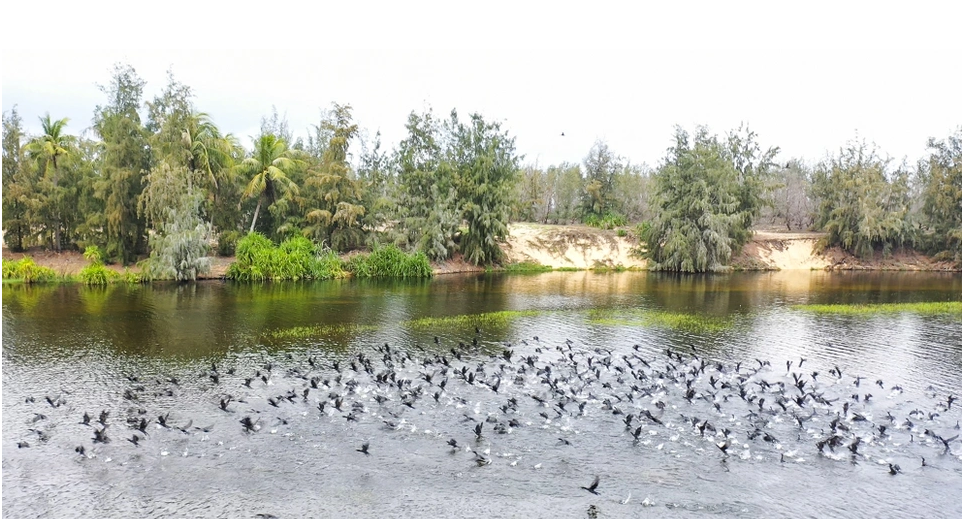 Visitors can enjoy the magnificent nature picture with the mallards gathered here to feed while exploring An Khe lagoon.
Visitors can enjoy the magnificent nature picture with the mallards gathered here to feed while exploring An Khe lagoon.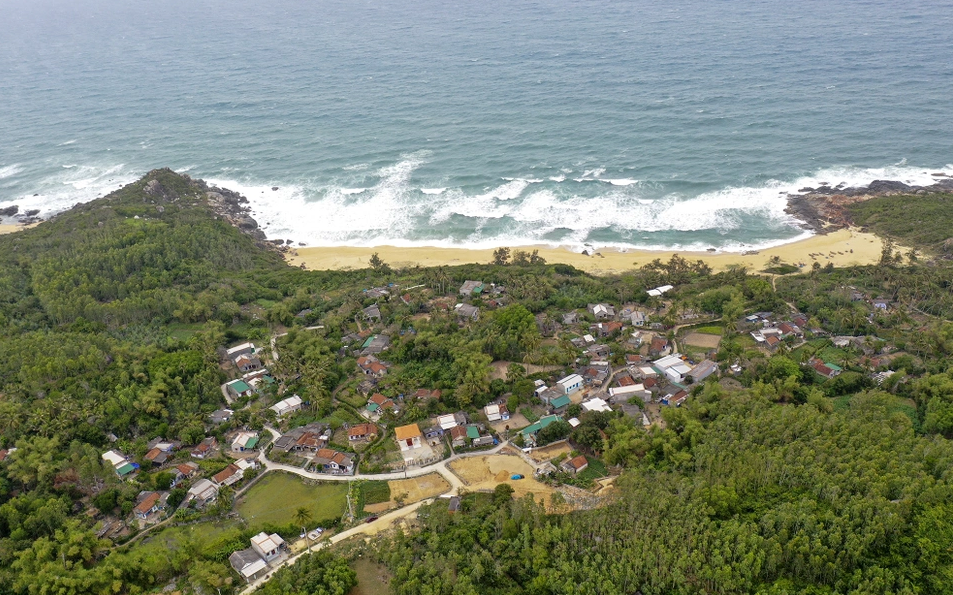 This ancient village still has temple relics and 11 ancient wells, an ancient Champa road that existed hundreds of years ago, and customs that are reminiscent of the Sa Huynh culture that existed more than 3,000 years ago.
This ancient village still has temple relics and 11 ancient wells, an ancient Champa road that existed hundreds of years ago, and customs that are reminiscent of the Sa Huynh culture that existed more than 3,000 years ago. The famous salt field Sa Huynh is depicted in the photograph. The heritage village is culturally and geologically qualified to become a living entity of Sa Huynh cultural space, according to Dr. Guy Martini, Secretary-General of UNESCO's Global Geoparks Network.
The famous salt field Sa Huynh is depicted in the photograph. The heritage village is culturally and geologically qualified to become a living entity of Sa Huynh cultural space, according to Dr. Guy Martini, Secretary-General of UNESCO's Global Geoparks Network.
 "When I visited Sa Huynh land, I was especially impressed by the people of the fishing village here. They are close, sketchy, and honest, and the landscape is lyrical and heartfelt ", shared Le Thi Dieu Tra (mo Duc district, Quang Ngai province).
"When I visited Sa Huynh land, I was especially impressed by the people of the fishing village here. They are close, sketchy, and honest, and the landscape is lyrical and heartfelt ", shared Le Thi Dieu Tra (mo Duc district, Quang Ngai province). The residents of Go Co's ancient village knit nets entice tourists and photographers to visit and photograph the village. According to archaeological experts, the village is a comprehensive picture of diverse heritage values, bringing together the essence of the three Sa Huynh, Cham Pa, and Dai Viet cultures.
The residents of Go Co's ancient village knit nets entice tourists and photographers to visit and photograph the village. According to archaeological experts, the village is a comprehensive picture of diverse heritage values, bringing together the essence of the three Sa Huynh, Cham Pa, and Dai Viet cultures.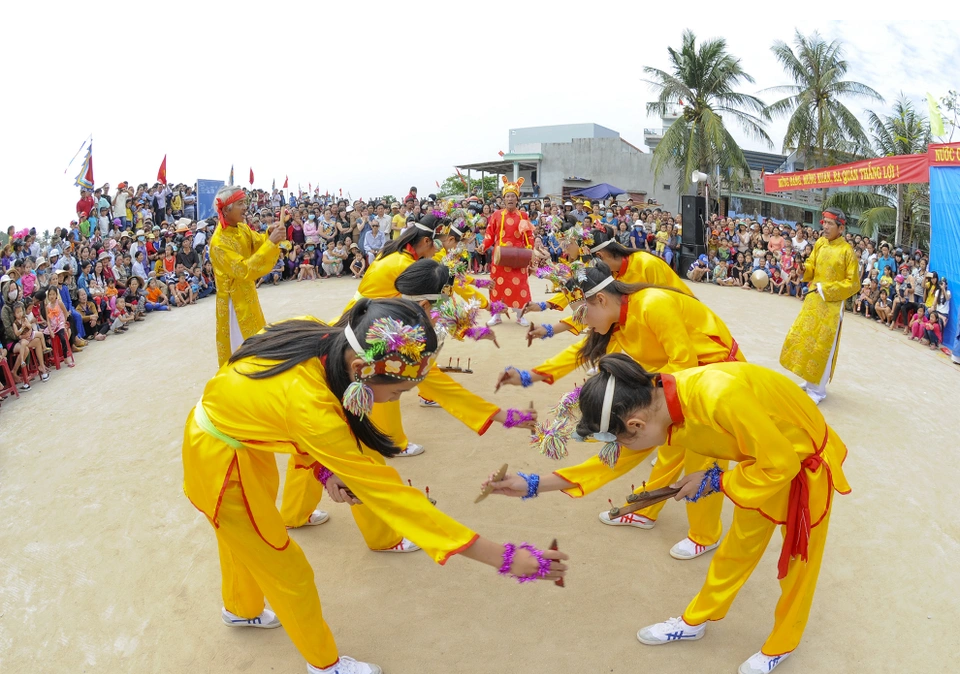 On the traditional National New Year's Day, Tet, a group of young men from Sa Huynh fishing village cheers the tug-of-war competition while the girls wear brilliant costumes to play the role of cheering actors (folk songs of fishermen from the central coast), singing bold talismans of sea and island culture.
On the traditional National New Year's Day, Tet, a group of young men from Sa Huynh fishing village cheers the tug-of-war competition while the girls wear brilliant costumes to play the role of cheering actors (folk songs of fishermen from the central coast), singing bold talismans of sea and island culture. The Sa Huynh culture was named after archaeologists who discovered it in Sa Huynh village in 1909. (Quang Ngai). The complex of three archaeological sites, Long Thanh, Phu Khuong, and Thanh Duc, with numerous artifacts discovered, has significant cultural and historical significance.
The Sa Huynh culture was named after archaeologists who discovered it in Sa Huynh village in 1909. (Quang Ngai). The complex of three archaeological sites, Long Thanh, Phu Khuong, and Thanh Duc, with numerous artifacts discovered, has significant cultural and historical significance.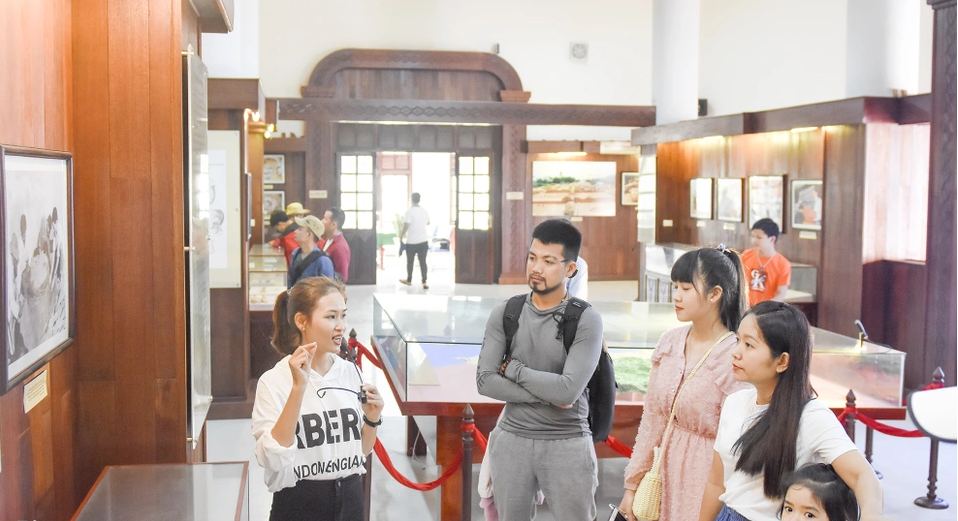 The Sa Huynh Cultural Museum attracts visitors. According to Dr. Doan Ngoc Khoi, Deputy Director of the Quang Ngai General Museum, Dong Son culture (North), Oc Eo culture (South), and Sa Huynh culture (Central) are the "three cradles of civilization" in the past, forming a cultural triangle in Vietnam's territory.
The Sa Huynh Cultural Museum attracts visitors. According to Dr. Doan Ngoc Khoi, Deputy Director of the Quang Ngai General Museum, Dong Son culture (North), Oc Eo culture (South), and Sa Huynh culture (Central) are the "three cradles of civilization" in the past, forming a cultural triangle in Vietnam's territory.
 Sa Huynh Beach (Duc Pho town, Quang Ngai province).
Sa Huynh Beach (Duc Pho town, Quang Ngai province).
Source: Minh Hoàng